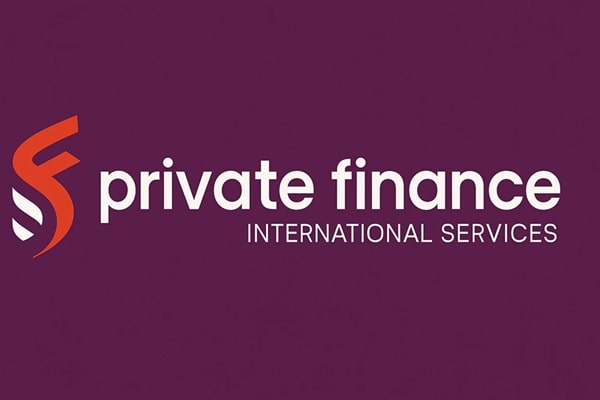Start With Curiosity, Not Criticism
Emotional spending is not a moral failure. It is a message. Your brain is trying to change how you feel as quickly as possible, and spending often delivers a fast mood shift. The problem is that the quick fix rarely lines up with your long-term goals. A better approach is to study the moments that lead to unplanned purchases and to learn what those moments are trying to solve. When you bring curiosity to the table, you can redesign the habit without shaming yourself into silence.
Reading other people’s experiences can help you notice patterns in your own. If you have ever searched for opinions on short-term borrowing or searched through title loan reviews, you have already seen how emotions and money choices interact. Those stories are data. Use them to spot your own triggers and to plan calmer responses that protect your budget.

Name the Feeling Before You Touch the Cart
The simplest way to identify a trigger is to pause for ten seconds before you buy and put a name to what you feel. Bored. Lonely. Overwhelmed. Celebratory. Anxious. Anger and joy both cause spending, just in different outfits. When you attach a label to the feeling, you create a tiny bit of space between the emotion and the action. That space is where better choices live.
Map the Cue, Routine, Reward Loop
Most money habits follow a loop. A cue sets the stage, a routine follows, and a reward seals the pattern. For emotional spending, the cue might be a push notification, a rough meeting, or a quiet evening on the couch. The routine is browsing and buying. The reward is a dopamine pop or a sense of control. Write down one loop you ran this week. Then decide on a new routine that gives you a similar reward at a much lower cost. A short walk, a voice note to a friend, or five minutes with music can reset your state without draining your account.
Spot the Four Usual Suspects
Certain feelings and moments trigger more unplanned purchases than others. Boredom nudges you toward novelty. Stress begs for relief. Celebration invites a treat. Scarcity says buy now or miss out. Notice which one shows up most often for you. If boredom is the main driver, build a small menu of interesting but free things you can do on autopilot. If stress is the driver, keep a comfort routine ready that starts with a glass of water and three slow breaths.
Check the Body Before the Budget
Many emotional triggers begin as physical states. Hunger, anger, loneliness, and tiredness fill the classic list. If you can address the body first, the urge to spend often fades. Keep a snack ready. Move your body for five minutes. Text someone kind. Take a short nap or step into sunlight. You are not avoiding the decision. You are creating a better window to make it.
Audit Your Digital Environment
Your phone and laptop can be trigger machines. Saved cards, one tap checkout, and perfectly timed emails create a friction free slide from impulse to purchase. Remove saved cards from stores you overspend at, move shopping apps off your home screen, and unsubscribe from sales emails that flip your scarcity switch. Turn off push notifications for anything that tempts you at the wrong moments. You do not need superhuman willpower if the path to buying is less smooth.
Unpack the Money Stories You Learned Early
Many of us carry quiet scripts from childhood or early work years. Maybe spending equaled love, or saving felt like missing out, or debt was normal. These scripts become triggers when life gets loud. Write one belief you picked up and ask if it still serves you. Replace it with a sentence that does. For example, trade I deserve this now for I deserve peace later and I can plan a treat for Friday.
Use Data with Heart
A little tracking goes a long way. For two weeks, write one line every time you start to shop for a nonessential purchase. Note the time, the feeling, and the place. You will see patterns quickly. Are you vulnerable after work. Late at night. During social media breaks. Use that information to place the right guardrail where it matters. For planning tools that turn patterns into a practical routine, the Consumer Financial Protection Bureau offers helpful budgeting basics and worksheets.
Create Replacement Rituals, Not Only Rules
A rule that says do not buy is brittle. A ritual that says do this instead is sturdy. When the urge hits, run a two minute reset. First, exhale slowly and relax your shoulders. Second, drink water. Third, ask one question out loud. What is the smallest free action that would help me feel the thing I am trying to buy. Then do it. The ritual shifts your state, and once your state shifts, the purchase usually loses volume.
Build a Friction Budget
Not every choice needs the same hurdle. Make three levels of friction. Green means daily needs that you buy without delay. Yellow means wants under a set amount that must survive a one day pause. Red means any decision that adds or increases debt and requires a two-day plan that includes total cost, payoff date, and what you will pause to make room. Friction turns a mood into a process.
Engineer Gentle Rewards for Good Calls
Your brain repeats what it enjoys. Give yourself a small reward when you catch a trigger and choose a better option. Keep a jar labeled Treats and feed it with a few dollars every time you skip an impulse. Use that jar on a set day for a planned joy. The ritual teaches your brain that restraint leads to pleasure, which makes future decisions easier rather than heavier.
Set Up Short Sprints and Quick Reviews
Run two-week sprints where you experiment with one trigger at a time. If late night scrolling leads to purchases, set your phone to charge in another room and keep a book near the couch. At the end of the sprint, review with a light touch. What worked. What was hard. What will I try next. Short sprints keep you engaged without feeling like a lifelong sentence.
Borrow a Few Science Backed Moves
You do not need to become a psychologist to benefit from the research. Self-control improves when you rest, reduce decision fatigue, and create simple routines. The American Psychological Association has a helpful overview of how willpower works and how to strengthen it in daily life. A quick read of their guide to willpower and self control can give you two or three tools to add to your plan right away.
Make It Social and Visible
Emotional triggers love secrecy. Share one small goal with a friend. Tell them you are practicing a one day pause for wants this month, and ask them to text you on Fridays to celebrate wins. Put a sticky note with your next savings milestone where you see it when you shop online. Visibility turns a private battle into a shared game.
Have a Crisis Script Ready
Hard days will happen. Prepare a script you can follow at low energy. Breathe slowly for six exhales. Drink water. Tell one person in a single sentence how you feel. Move ten dollars to savings or pay a small bill to protect momentum. You are not trying to fix everything. You are trying to limit damage while emotions settle.
Closing Thought
Emotional spending triggers do not disappear when you ignore them. They soften when you notice them, name them, and give them better outlets. Start with curiosity, map your loops, and design small replacement rituals that meet the real need behind the urge. Use gentle friction, short sprints, and simple rewards to keep the process light. Over time you will spend more by choice and less by reflex, which is how financial calm becomes part of your everyday life.

